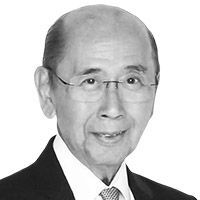The Phl COVID-19 burden: Views from Southeast Asia

By Johanna Son (Bangkok-based editor/founder Reporting ASEAN series)
“Buffets are allowed?!” a friend in Manila blurted out, when I told her about news of a new Filipino restaurant in Bangkok. “You can go to the cinema?” was another friend’s incredulous comment upon hearing that I had just watched ‘The Kingmaker,’ the latest documentary about Imelda Marcos.
Almost apologetically, I said, “Oh, we’re not in lockdown any more.” Daily activities have resumed, though wearing masks remains a norm and a must in many places, our homes still make up almost our entire world, and the Thai capital is far from its bustling self.
These chats, however, brought home the contrast between life in Thailand and the Philippines, over six months since the first COVID-19 case was reported in Southeast Asia.
The Philippines has the most active cases among the region’s 11 countries, accounting for more than 56 percent of the total as of July 28. In contrast, Thailand has had no domestic transmission for two months. In Southeast Asia, the Philippines has the lowest figure of recoveries out of total cases (31.81 percent), and highest death incidence at 1.82 per 100,000 people (Indonesia was almost the same at 1.81 on July 28.) Except for those of the Philippines and Indonesia (59.32 percent), the percentages of other Southeast Asian countries’ recoveries out of total cases are at 65 percent all the way to 100 percent.

It is not just Thailand that is coping better than the Philippines. Nearly every country in Southeast Asia, from Malaysia to Laos to Cambodia, is.
Southeast Asia is our reference point, our community not just geopolitically in ASEAN, but geographically, in terms of development context, socio-economic links and many daily realities.
Its experience shows that it is not GDP, political system or ideology that makes the most difference in a public health emergency, but leadership – that is, leadership that is able to pull a nation together in a social contract, while directing a health system and using science to shape a response that various sectors of society have ownership in.
Thailand harnessed its network of village health volunteers to spread the word about preventive measures. Public health officials are the center of its phased response to COVID-19, including the reopening of the economy.
Vietnam had its military set up quarantine centers and had, early on, put people in quarantine without getting bogged down in costs. Its contact tracing system tracks until the fourth contact of someone who tests positive.
Before easing restrictions on mobility, Thailand developed a QR-code tracking application so that people could move around, but could be reached should positive cases arise.
During Singapore’s ‘circuit breaker’ lockdown, its government invested in measures to address future cases. Its foreign minister, Vivian Balakrishnan, said a country cannot reopen safely without two elements: an efficient quarantine system and a quality contract-tracing method.
Several governments flooded their societies with information, online and offline, on wearing masks, washing hands and physical distancing. People heard health messages when they used their mobile phones. Cambodia’s local officials went around on vans with bullhorns and stuck anti-COVID posters on walls and trees.
No country has seen their police force round up people without masks and pack them in gymnasiums, like the Philippines has done in its security-grounded response. Other Southeast Asian nations have, in fact, gone the other way and distributed free masks.
Vietnam’s new cases remind us that a country needs stamina for the long haul, through several rounds of opening and closing economies amid various COVID-19 episodes. Using lockdowns to wait it out, or wait for a vaccine that is far from a certainty, seems like dancing at the edge of a cliff.
There are more worrisome figures in the Philippines. Since June, when the community quarantine was eased, its percentage of positives out of daily tests has been inching up and reached 12.9 percent as of July 27, data from the Department of Health’s dashboard show. (The Philippines’ and Indonesia’s positive rates exceed the World Health Organization-advised level for reopening economies: a five percent positivity rate or less for at least 14 days.)
Southeast Asians live with one foot in the First World, and the other, in the Third World, so we are no strangers to disasters. We don’t expect governments to do magic. But we have seen, right in our own Southeast Asian neighborhood, how health and political governance together make a potent medicine first for saving lives, and then livelihoods.
- Latest
- Trending

























